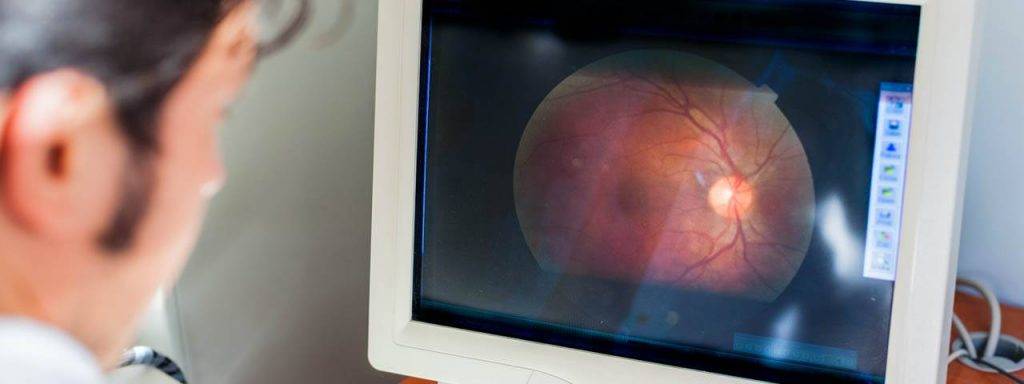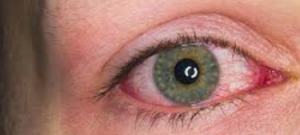A retinal blood vessel occlusion, commonly referred to as an ‘eye stroke’ occurs when the blood vessels in the eye become narrowed or blocked.
The blood vessels in the body are responsible for carrying oxygen and nutrients to each and every body part. When the blood supply is cut off and can no longer reach a specific body part, a stroke can occur— leading to significant damage to that body part.
When a stroke occurs in the eye, the retina is primarily affected.
The retina is the light-sensitive tissue in the back of the eye that transfers visual information to your brain for interpretation and processing. This enables you to see images clearly.
How does an eye stroke affect vision?
The blood vessels in the eye that enter the retina via the optic nerve are called the ‘central’ blood vessels. As these blood vessels branch out into smaller blood vessels, they are referred to as ‘branch’ blood vessels.
When the central or branch blood vessels in your retina become blocked, fluid can leak into the retina and cause swelling. This retinal inflammation is what ultimately impacts your ability to see.
There are different types of eye strokes:
-
- Central retinal artery occlusion (CRAO) occurs when the blockage is located in the retina’s central artery.
- Branch retinal artery occlusion (BRAO) occurs when the blockage is located within the retina’s smaller branch arteries.
- Central retinal vein occlusion (CRVO) occurs when the blockage is located in the main central retinal vein.
- Branch retinal vein occlusion (BRVO) occurs when the blockage is located within one of the smaller retinal branch veins.
Am I having an eye stroke?
Eye stroke symptoms can come on suddenly, or develop gradually over the course of a few hours or even days.
Prompt treatment is essential in order to prevent permanent vision loss.
Symptoms:
- Grey spots or floaters in your visual field
- Eye pressure
- Blurry vision that gets progressively worse
- Gradual or sudden total vision loss
The distinguishing symptom of an eye stroke is that it typically occurs in only one eye.
Risk factors
While it isn’t always possible to determine the cause of an eye stroke, researchers believe that certain factors and health conditions can increase your risk.
- Older age: Above age 60
- Gender: Male
- Smoking
- Diabetes
- Glaucoma
- High blood pressure
- High cholesterol
- Cardiovascular disease
- Narrowing of the artery in the neck (carotid artery)
- Blood disorders
If you are experiencing symptoms of an eye stroke, contact an eye doctor immediately, even if your symptoms seem to be improving.
SEE RELATED: Anterior Uveitis
How is an eye stroke diagnosed?
An eye stroke is diagnosed during an eye exam. Your eye doctor will use specialized tools and imaging devices to obtain a clear view of your inner eye and identify signs of retinal fluid or damage.
- Optical coherence tomography (OCT) is a digital imaging test that can help your doctor detect the presence of retinal swelling.
- Fluorescein angiography is used to highlight any blood vessel damage in your retina. During this test, a small amount of yellow dye (fluorescein) is injected into a vein in your arm. The dye travels through your bloodstream to your eyes. A camera then captures images of the retinal arteries as they are highlighted, to facilitate the identification of blocked arteries.
- Tonometry is a test that measures the pressure within your eyes to detect the presence of glaucoma— which can cause an eye stroke.
- Visual acuity tests facilitate the identification of a refractive error and measure how well you are able to see, and if your vision has been affected.
How is an eye stroke treated?
Eye stroke treatments must be given within a few hours following the onset of symptoms in order to effectively protect your vision and prevent vision loss.
The most common treatments include:
- Inhalation of a carbon dioxide-oxygen mixture to widen the arteries of the retina
- Removal of ocular liquid to help the clot pass
- Medication to break up the clot
- Anti-VEGF injections
- Corticosteroid injections
- Eye massage to help open the retinal arteries and veins
- Laser treatment
- Pan-retinal photocoagulation therapy
Complications from an eye stroke
Although some vision may be recovered following an eye stroke, most people experience some degree of vision loss.
In addition, other serious complications can arise, such as:
- Macular edema
- Neovascularization
- Neovascular glaucoma
- Blindness
Can I prevent an eye stroke?
While an eye stroke cannot always be prevented, you can lower your risk by making certain lifestyle choices:
- Control diabetes and glucose levels
- Treat glaucoma and maintain a normal eye pressure
- Maintain a healthy blood pressure
- Consume a healthy diet to keep your cholesterol levels within the optimal range
- Quit smoking
LEARN MORE: Guide to Eye Conditions
If you or a loved one is experiencing symptoms of an eye stroke, vision loss, or any visual changes, contact an eye doctor immediately for a proper diagnosis.
Early treatment is essential to protect your vision and prevent any complications from an eye stroke.

